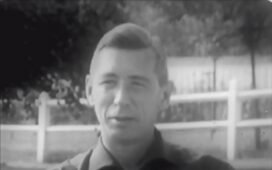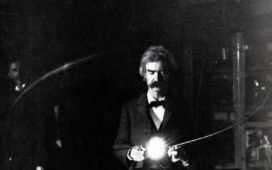It seems not to be documented whether the Santa Ana winds were blowing when Maya Deren and Alexander Hackenschmied shot Meshes of the Afternoon. But everything about the film itself suggests that they must have been, so vivid does its atmosphere of luxuriantly arid paranoia remain these 62 years later. Despite its runtime of less than fifteen minutes and the obviously modest means of its production, it’s long been canonized as not just a standard introduction to experimentalism in film studies classes, but also a critical favorite. In fact, it placed in the last Sight and Sound critics poll of the best films of all time at a respectable #16, above Abbas Kiarostami’s Close‑Up and below John Ford’s The Searchers.
Meshes of the Afternoon ranks at #62 on the directors poll, a spot that sounds low until you consider that it’s shared with the likes of Late Spring, Some Like It Hot, Sátántangó, Blade Runner, and Lawrence of Arabia. Still, it’s a bit surprising that it didn’t come in higher, given the obvious influence both direct and indirect of its early Los Angeles-noir surrealism on so many subsequent major motion pictures.
“Had Californian sunlight ever looked as suggestive or sinister before the sharply etched dream world of Meshes of the Afternoon?” asks Ian Christie in his short accompanying essay at the British Film Institute’s site. “Certainly, it soon would, in Billy Wilder’s Double Indemnity and many later films noirs” — not to mention the “many traditions over eight decades” it has inspired since.
Those include the oeuvre of the late David Lynch, which constitutes a tradition unto itself, but even the most casual filmgoer could hardly watch Meshes of the Afternoon without feeling deep resonances between it and a great many of the non-experimental movies they’ve seen since. The story, such as one can decipher it, has to do with a woman alone at home, haunted by a glimpse of a hooded figure with a mirror for a face and unable to tell whether she’s on the inside or outside of a dream. By the end, she is dead, but on which plane of reality? There are, of course, no answers, just as there is no dialogue, explanatory or otherwise. But Deren and Hackenschmied knew they didn’t need it, being fully aware that they were working in a medium where everything important can be conveyed visually — and, ideally, experienced by viewers just as if they were dreaming it themselves.
The film will be added to our collection, 4,000+ Free Movies Online: Great Classics, Indies, Noir, Westerns, Documentaries & More.
Related Content:
Based in Seoul, Colin Marshall writes and broadcasts on cities, language, and culture. His projects include the Substack newsletter Books on Cities and the book The Stateless City: a Walk through 21st-Century Los Angeles. Follow him on the social network formerly known as Twitter at @colinmarshall.















